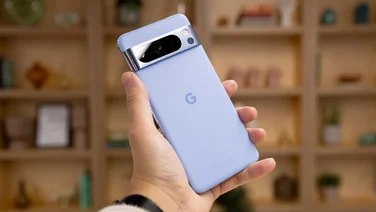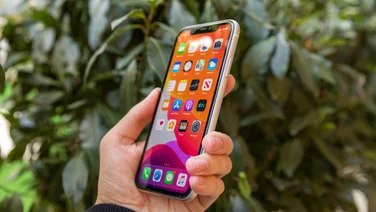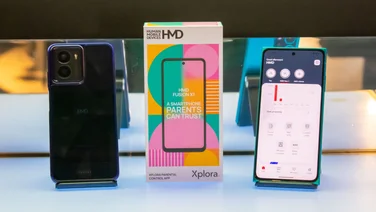To help us provide you with free impartial advice, we may earn a commission if you buy through links on our site. Learn more





The new HTC Desire S is a minor update to the original HTC Desire, with a slightly faster graphics processor, more memory, faster 3G and Wi-Fi support, plus Android 2.3. The newer operating system provided a huge speed boost, doubling its score in the Quadrant benchmarks, and it also adds many useful features such as improved text selection and power management.

Visually, the new Desire isn’t that different from the old one; like the new HTC Wildfire S, it actually feels a bit chunkier than the original, even though in fact it’s smaller and lighter. This could be due to the design: the large chrome grille above the screen makes the screen look smaller in comparison, and it’s lost the physical buttons and the optical trackpad below the screen that made the phone longer and therefore appear slimmer.

There are changes inside, too, most notably an upgrade from Android 2.1 to 2.3 and a much larger helping of memory (although Desire owners can now upgrade to Android 2.2 and will gain most of the speed benefits). There’s now 768MB of RAM compared to the Desire’s 576MB, and internal storage has increased from 512MB to 1.1GB, leaving plenty of room for apps.
The S model also supports HSPA+, which uses multiple antennas to get increased mobile download speeds. At present only 3 has started to roll out support for this standard in the UK, with theoretical speeds of up to 21Mbit/s. However, those antennas should provide better connections to existing 3G standards too. The handset also supports 802.11n Wi-Fi, so you should see faster downloads when connected to wireless networks too.
While the processor in the Desire S has the same name, it’s a very different chip. The 1GHz QSD8250 Scorpion processor in the original Desire was built using a 65nm process, whereas the new MSM8255 Scorpion is built using a 45nm process, so although it runs at the same 1GHz speed, it uses far less power and produces less heat. Which you can see in its far-superior battery life, up almost 50% to over 31 hours of constant MP3 playback.
It’s also paired up with an improved graphics chip, the Adreno 205, which supports hardware acceleration for vector graphics in web pages and the Adobe Flash formats, plus it has better shader performance. The result is a very snappy phone indeed. Flicking through home screens or the application tray, we noticed no delays at all. The capacitive touchscreen uses toughened Gorilla glass and is bright and colourful, although on Android’s lowest brightness setting it was far too dark.

HTC’s Sense software returns again, and while we’re fans of its social network aggregation features and slick UI improvements, it’s starting to get bloated, and we slightly resent the fact that you can’t uninstall any of its associated apps. Although the FriendStream app is useful, aggregating status updates from Twitter and Facebook, we could do without HTC’s Peep Twitter client, which isn’t anywhere near as good as Twitter’s official app. It’s still incredibly useful to be able to link your contacts, and Sense prompts you to link more contacts as you add new services. If someone’s changed their name, you can also link them manually.
A new addition to Sense is the ability to organise your application tray. By default, the tray is now split into sections so that when you scroll up or down, it only scrolls one section at a time. Two new icons at the bottom of the screen let you jump to your most frequently used apps, or just the apps you’ve downloaded, which removes the need to see the pre-installed apps. While this ties in with the design of other Sense apps, it’s not as flexible as Samsung’s modifications to the app tray, as seen on the Galaxy S2, where you can create new groups and drag and drop icons.

Although the camera shares the same number of megapixels with its predecessor, we found shots much more colourful and crisp with this new model. Outdoor shots were especially good, while indoor shots started to exhibit more of the noise in dark areas that normally plagues smartphone cameras. The LED flash certainly helped to reduce this effect, but it tends to light up only the centre of the shot, leaving the edges in noisy darkness.
New Android users will find the new Desire S quick and full of features, but if you have an old Desire you might be disappointed, as it’s not much of an upgrade. Its single-core processor can’t compete for raw speed with the dual-core Samsung Galaxy S2 or LG Optimus 2X, but then again it costs much less, both SIM-free and on contract.
At present the original single-core Samsung Galaxy S has recently been upgraded to Android 2.3, and costs as little as £25 per month on contract, so it’s still the best smartphone available. But if you want the fastest connections, then a small price drop would make the Desire S a great choice.




